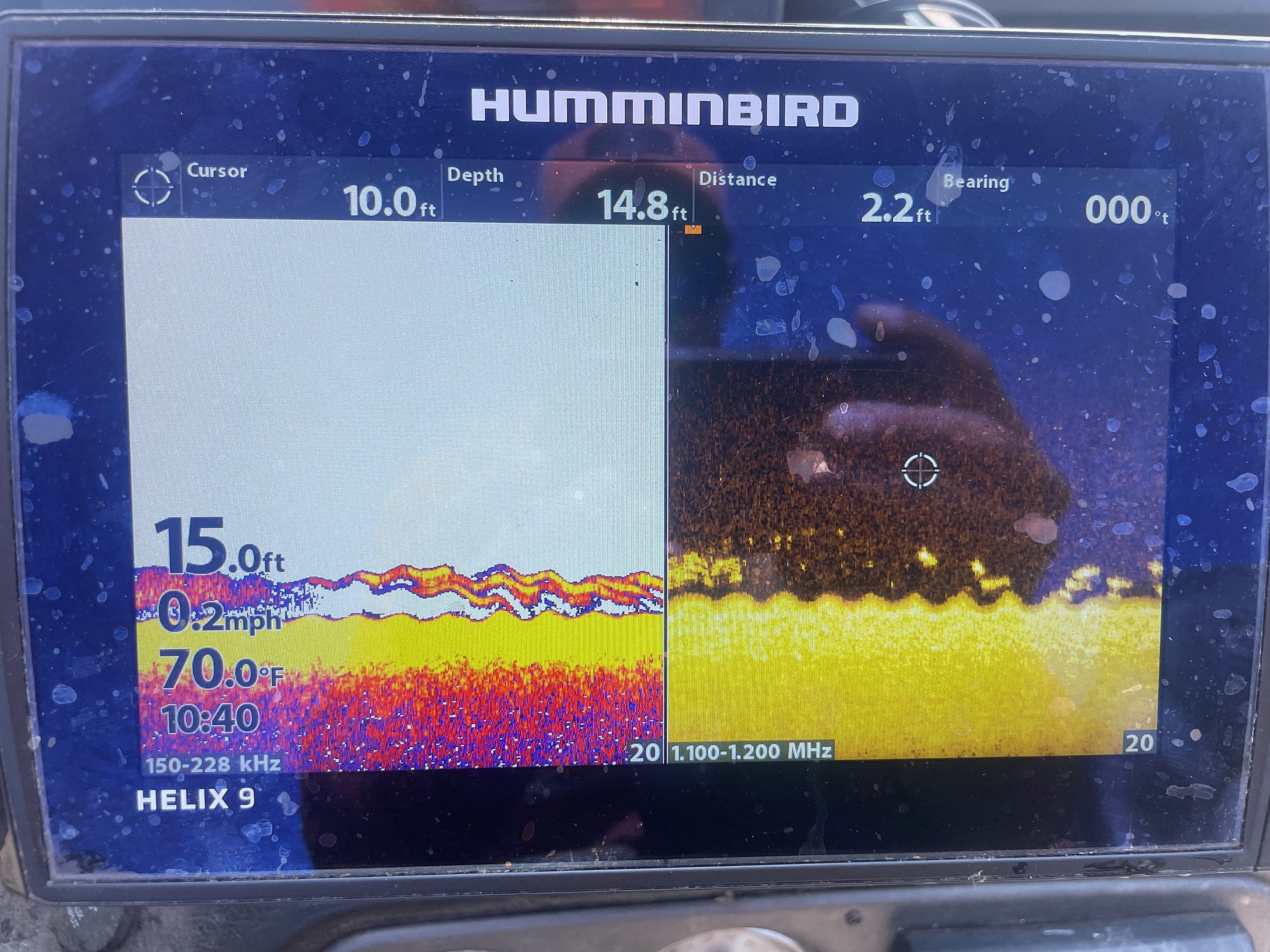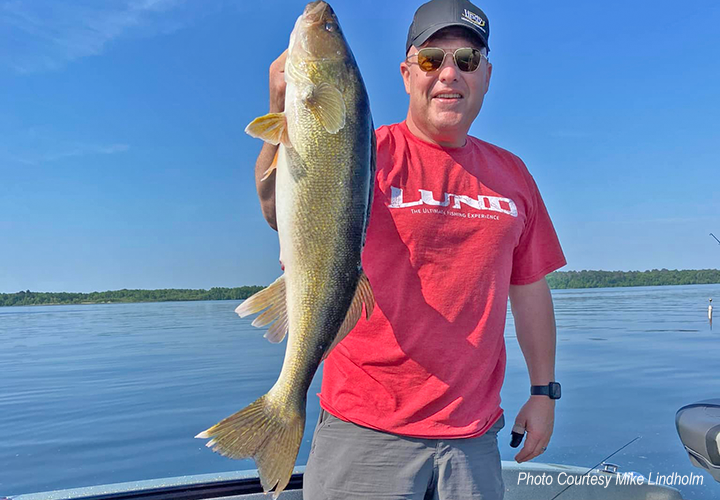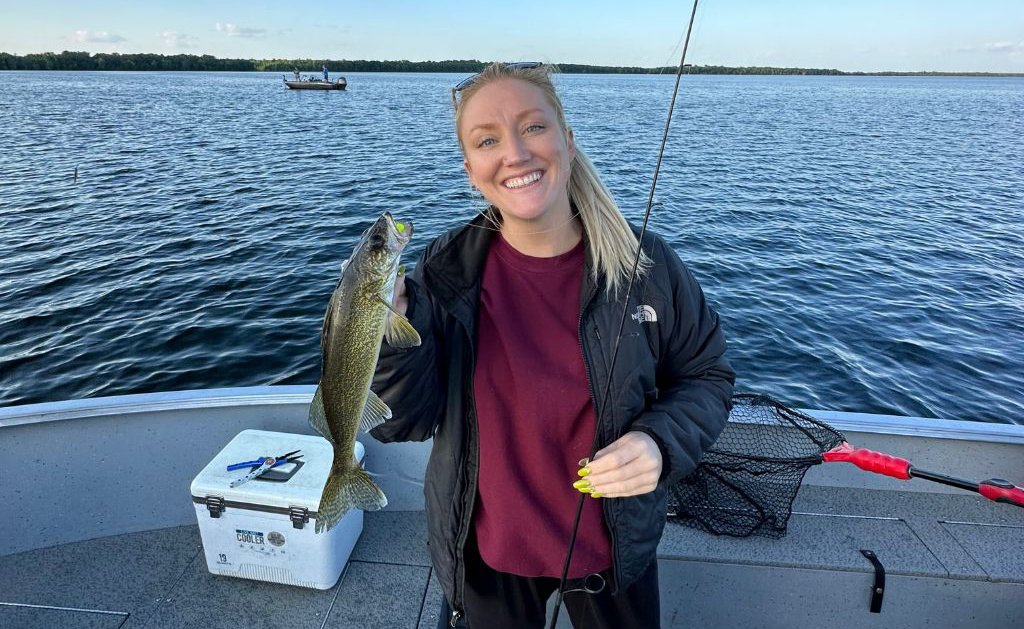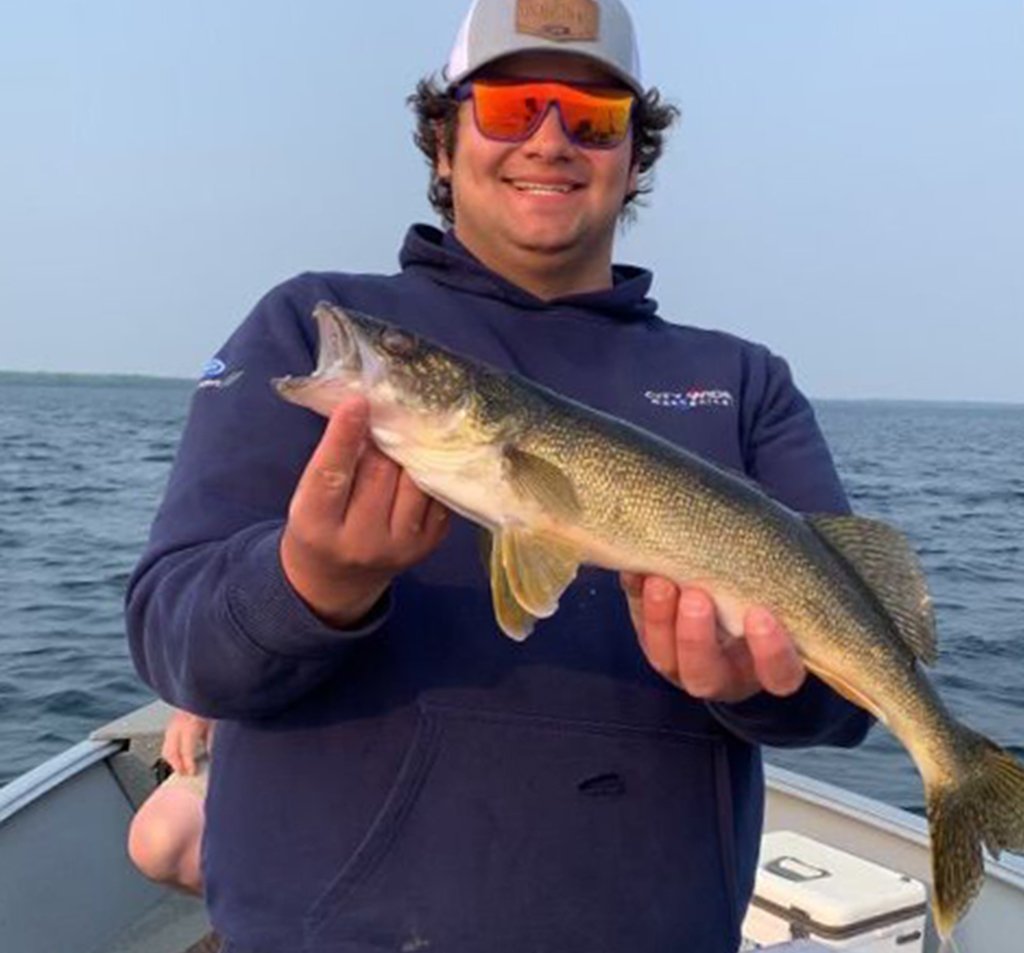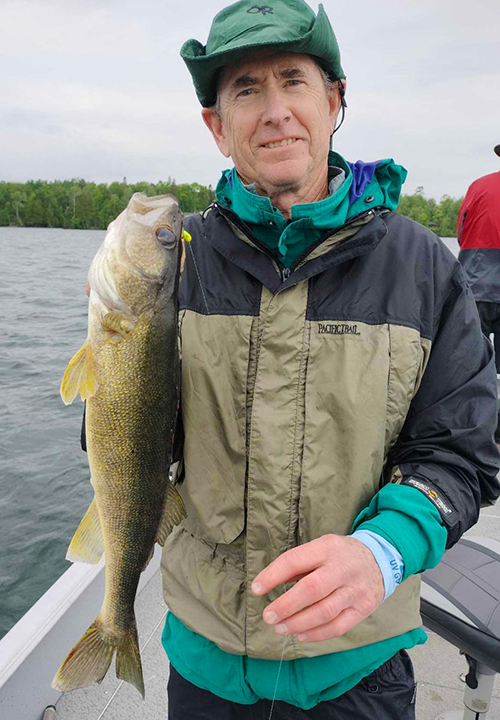The pursuit of walleyes on both Cutfoot Sioux and Lake Winnie is reduced for several reasons. Some folks are paying more attention to family activities, others have been waiting for the next “hot bite” to start up, and still others have turned their attention to fishing for mid-summer species, bass, sunfish and rock bass and others. But right now, folks who want to catch walleyes can do it, here’s some advice to guide you.
Walleye action on Lake Winnie
Admittedly, the walleye bite is not at its peak right now, but those who are choosing to fish for walleyes find that creativity and persistence do pay off. Getting fish to bite is not the issue but locating them can be. That’s because fish have dispersed over a broad range of territory, some are on the flats, some are using shoreline vegetation, others follow the break lines on deep structure and many are suspended over open water in the mid lake basin.
The mayfly hatch that hit the lake last week has run its course, so finding less food in concentrated areas has been one reason fish are dispersed more now. Surface waters have declined too, once crossing the 80-degree mark in June, they have now fallen into the 69-to-71-degree range, the cooler water works against folks who love fast presentations like trolling spinners and crankbaits. Water clarity is a factor as well, while some regions of the lake do have a modest algae bloom, other areas remain clearer than usual for this time of the season; that’s tough news for fishing on calm, sunshiny days.
Folks who are doing their best at finding and catching walleyes are a few key presentations. Slip floats, which are becoming more popular on Winnie, jigging presentations, jig minnow, jig and plastic, jig and night crawlers have been productive too.
Jared Saufferer, our fishing guide, has been helping most guests catch walleyes using slip-bobbers and leeches. Key depths have ranged between 15 and 20 feet of water and for Jared, rocks have been key. Whether on large rock piles, or on smaller, scattered patches of rock, he keeps the boat out and away from the structure. Anglers pitch the bait toward the fish holding structures and allow the lively leeches to do their magic.
Lake Winnie Walleye caught using slip bobber and leech combo. Courtesy Jeff Sundin
The better your electronics, the easier Sufferers method is, but even folks with rudimentary fish finders can get effective results; creativity is the key. Approach likely fish holding structures cautiously, creep toward them using your trolling motor and stop short as soon as you’re within easy casting range. It’s true that you won’t “see” the fish, but when you guess right and there are fish on that spot, they won’t see you either; the element of surprise is a powerful tool!
Jigging presentations can be approached the same way, casting toward likely structures with jigs and minnows has been reliable, especially for Reed Ylitalo, another one of our preferred guides. Ylitalo prefers finding shiner minnows when possible and seeks out rock structures for jigging too. Cast, or pitch your jig-minnow toward the structures and retrieve using a “hop-drop-hop-swim-hop-drop” presentation.
Sundin favorite, Lindy Live Bait Jig and Berkely Ripple Shad
Another local guide, Jeff Sundin has been fishing with jigs too, but for his money, large plastic action tails have been getting more attention. Sundin finds fish along the steeper breaklines on mid-lake bars or adjacent to the lake’s sprawling shoreline flats. A ¼ ounce Lindy Live Bait Jig, dressed in a 3-1/2 Berkely Ripple Shad, pictured here, is one of his favorite combos. “The trick is to NOT think of these as a substitute for live bait. Instead, remember that this is its own, unique presentation and they call for an entirely different retrieve. Cast the lures as far away from the boat as possible, let them fall and then on a tight line, retrieve using an aggressive “rip-drop-rip-drop” presentation. The fish strike on the drop, that’s why keeping your line tight is important, when you feel the strike, strike back immediately.” Sundin says.
Some of our guests have done well trolling along shoreline patches of vegetation as well. As the vegetation becomes lush, the typical mid-summer food chains set up. Spinners tipped with minnows, crawlers or leeches have produced some walleyes and pike or perch strike them too. Wiggle Worming, another popular presentation, will catch walleyes here too, especially when you’re presented with a good drifting wind. The shoreline action improves during low-light periods, so focus on early morning, late evening and overcast days.
Early risers can catch panfish along the cabbage patches
Early risers can take advantage of emerging vegetation for panfish. So far, this hasn’t been the best season for either sunfish or crappies, but like the walleye fishing, creative anglers are catching fish. Trolling the edges of cabbage, cast small jigs tipped with plastic tails toward pockets and gaps. Let the fall and then retrieve using a “swim-drop-swim-drop” retrieve. If you’re starting from scratch and need to locate places to focus your efforts, try trolling with spinners. The spinners become more effective when water temperatures are warmer, so for now, this should be a search tool and not the primary presentation. Later, if and when water temperatures rise, spinners will become more effective.
Bass can be found along the cabbage and coontail patches too, but for the best results, focus on bulrushes. Some of Cutfoot and Winnie’s best bass spots are in 2 to 3 feet of water, in the heavy bulrush patches. Weedless rigs are best, and heavy gear is essential too, strong braided line and medium-heavy casting rods will perform best.
Using the same heavier gear, cast large spinnerbaits, bucktails and swim baits for both pike and musky. There are good numbers of pike in the cabbage right now, look at the deep ones found in Tamarack Bay, these have been reliable producers this summer. It’s hard to single out a musky on either Winnie or Cutfoot, but any given cast could produce one, and there are some large ones out there.
Perch fishing continues to dumbfound most folks on the lake. They do occasionally show up, and when they do, they’ve been large, but the schools of fish have been in random locations and the fish seem to move often. Finding a good school of perch on one day does not guarantee that the next day will be productive in that area. So, catch some when you find them and don’t expect consistency.
With the Independence Day holiday behind us, we’re looking forward to just a few more weeks of mid-summer, family activities before the back-to-school check out begins. After that, fishing will become the priority for many, and we’ll be watching for the action to ramp up as it typically does. Even though walleye fishing may not be at its peak right now, there are fish being caught and using the presentations discussed here will help you get some. Good luck out there!











